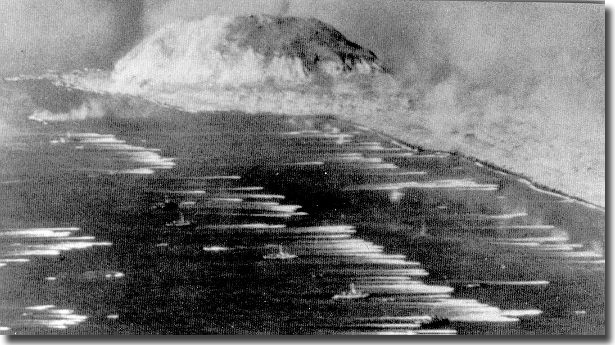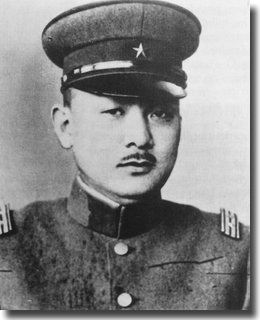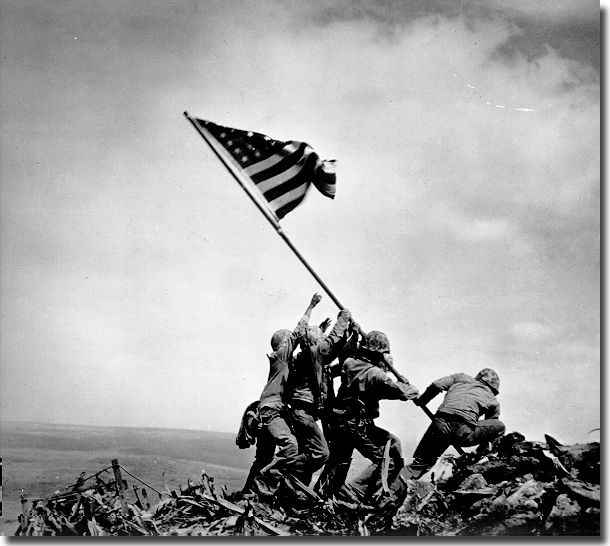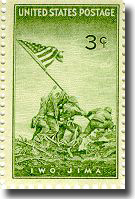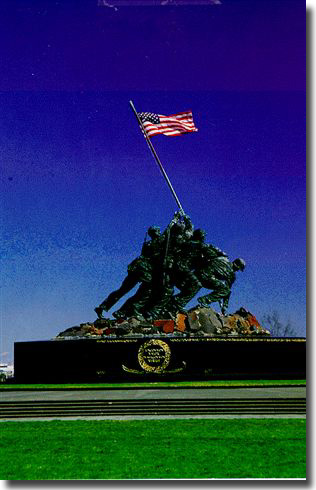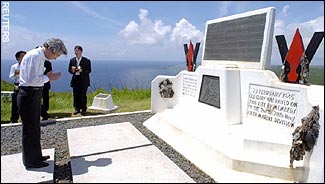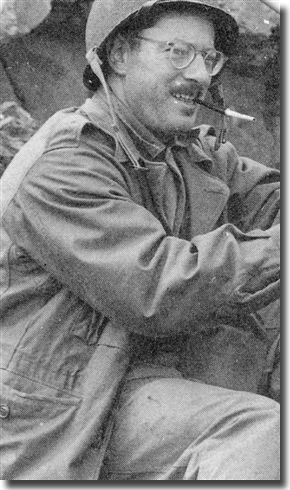|
Bloody Iwo Jima. A 36 day Battle for supremacy in February 1945
Introduction. Iwo Jima squats between Tokyo and the Marianas, some 670 miles from either destination.
Iwo Jima, one of the largest seaward invasions of the Pacific War February 1945. At 0200 ( 2 AM ) on the 19th. of February 1945, the Naval bombardment commenced, this was the traditional start to any sea ward landing made on a Japanese held position in the Pacific war. The United States Navy, sometimes with several cruisers from the Royal Australian Navy, stood off the beaches, soon to be swarming with landing craft filled with Marines, and pounded the area with high explosive shells from the battleships, heavy and light cruisers, devasting all in the path of this rolling smoke and thunder barrage. 110 bombers added their bombloads to the ever falling naval shells, to the veterans in the navy ships this was routine stuff. From the Leyte landings in October 1944 when the Kamikaze Menace made their debut, lookouts in the ships, and their colleagues on their air warning radar sets kept a vigilent watch for any ZOOMBIES that might attack. At 0830 ( 8.30 AM ) the order "Land the Landing Force " was issued, on shore, 21,000 Japanese burrowed underground in the volcanic rock awaited. In Command.
Lietenant General Tadamichi Kuribayashi, One of the bloodiest and most costly battles of the war in the Pacific was underway. Iwo Jima, a tiny island about 1/3 the size of Manhattan, for the next 36 days was to become the greatest populated 8 square miles on the planet.
Flame Throwers, hand grenades, and Napalm were amongst With each Marine carrying a 100 pound pack it was well nigh impossible to cope with the volcanic ash abounding on the island. The US Marines above ground, fought a hidden enemy below ground, never had the mighty Marines struck this type of warfare in all their experience. It took flame throwers, napalm and hand grenades to cope with the Japanese, almost inch by inch, they had to prize out the Japanese defenders from their caves. It was 36 days on the 16th. of March 1945 before US forces on Iwo Jima declared that the island had been secured. At Sea. Famous Photograph.
The famous Flag Raising Photograph at Iwo Jima. Conclusion.
On the American side some 6,821 dead, a further 19,213 wounded, almost 1/3 of all who took part in this battle were to wind up dead or wounded. A dreadful price to pay for a small volcanic outcrop stuck in the western Pacific Ocean.
When the public first demanded a stamp commemorating the Flag Raising picture, the US Post Office initially rejected the idea out of hand. "No living person(s) can appear on a US stamp," they replied. But the public demand was so great that Congress pushed for the stamp. It was issued just five months after the Flag-Raising. On the day of issue, people stood patiently in lines stretching for city blocks on a sweltering July day in 1945 for a chance to buy the beloved stamp. For many years, this was the biggest selling stamp in the history of the US Post Office. (Over 137 million sold.)
The Iwo Jima Memorial. Each figure is 32 feet high. Japan honours US dead at Iwo Jima, June 2005 Mr Koizumi paid his respects alongside bereaved Japanese and representatives of the American army He made his visit during a ceremony marking one of the Second World War's most symbolic battles in which American troops first captured Japanese territory 60 years ago. The moment was caught in an iconic photograph of troops hoisting the Stars and Stripes on the island's peak, Mount Suribachi. Mr Koizumi joined about 100 bereaved Japanese and representatives of the American army in Japan to pay his respects.
Japanese Prime Minister visits Iwo Jima in June 2005 He said: "Over 28,000 Japanese and American lives were lost on Iwo Jima. I believe today's peace and prosperity is built on their noble sacrifice. Since the Second World War, Japan has never once participated or become involved in war and has maintained peace. "From now on, too, we must never forget the tragic lessons of war. We must progress towards friendly relations between nations and must actively strive to create lasting world peace." Mr Koizumi also laid a wreath at the island's memorial to the 7,000 American soldiers killed in the one month battle in February 1945. The tiny island, around 800 miles south of Tokyo, is now a Japanese military base. The islanders were moved to the mainland after the war.
Joe Rosenthal who took the Flag Raising photograph on Iwo Jima |

